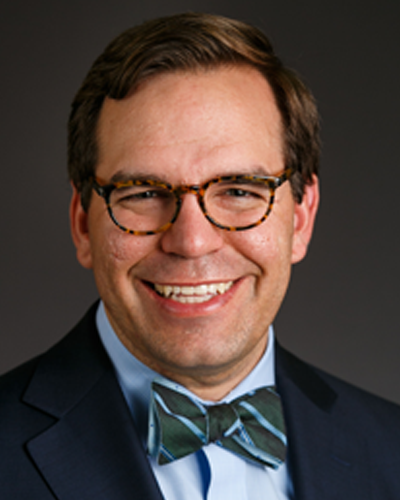With the spike in patient demand following the COVID-19 Pandemic, many owners are actively recruiting associate ODs to help carry their increased demand. And any owner looking to hire an associate right now knows that the market is tight.
My feeling is we have an outright shortage of ODs. At the very least, optometrists are misallocated relative to demand; there are too many in cities and not enough in rural settings. Still, many urban practices also struggle to find associate ODs.
So it's hard to find an available experienced associate. Should you turn to students of optometry, then? They're available and looking for work, after all. On the other hand, they're unproven. $120k a year for a full-timer is a significant outlay for "potential". What's an owner to do?
How to manage associates’ production
More and more, I’m surprised at how little owner ODs give feedback and oversight to their associate doctors. These ODs are seeing YOUR patients, after all. You SHOULD care how they’re practicing.
From a metrics standpoint, I’m a firm believer in managing to collected gross revenues for your whole team (including associates), not net profit. Opticians influence cost of goods, but only owners control net income. So why focus on gross collected revenues?
Revenues in your practice result from two things: how many patients you care for, and how much care those patients consume from you. In benchmark terms: Comprehensive exams x Revenue per Comprehensive Exam = Collected Gross Revenue.
Remember that revenue is the output. The input is caring for patients’ eyes. This doesn’t mean your practice should push solutions on patients that they don’t need. It does mean that the more comprehensively you care for your patients, the more you deserve to be paid.
This also applies to associate ODs. Their production is the result of how many patients they see and how much care they provide.
Priorities for the new grad
It’s one thing to hire an associate who has learned the ropes, but what about an OD who’s fresh out of school?
I think the first priority for the new grad is to help them get their rhythm down as they build to a full schedule. Pre-pandemic, most students only saw four patients a day in clinic (not including externship or residency). So, to get up to fifteen or twenty-five patients a day is going to take some time.
The second priority is prescribing. How do they educate and persuade patients to take on the full suite of solutions – both products and services – that will most fully preserve and enhance the patients’ vision?
Finally, be sure that your new-grad associate is coding fully and appropriately for the care they provide. New grads often worry about over-coding. Reassure your entire team – doctors and non-OD staff, that you deserve to get paid for the care you provide.
The process for everyone
Here’s what I would do with any and all doctors in your practice, including partners. Have a monthly clinicians’ lunch, preferably off-site. For each OD, bring:
- Their Collected Gross Revenue production for the month
- The number of Comprehensive exams they performed
- Calculate their revenue per comprehensive exam (revenue divided by exams)
- 5-10 charts each, pulled at random
Compare everyone’s results. The goal should be that each doctor’s revenue per comprehensive exam is the same, assuming everyone sees a similar pool of patients. Remember, revenue per exam is the output for the standard of care, so what we’re really saying is:
“We want to have a consistent standard of care across all the ODs in this practice. It shouldn’t matter which doctor a patient sees; the results should be roughly the same.”
There’s a real cost for an owner when an associate averages $325 per comprehensive exam to the owner’s $540 per exam. The owner WANTS to hand patients off to the associate, but she would be giving up revenue potential for every patient she doesn’t see.
And that’s where the charts come in. Do a mini “grand rounds” on each doctor's charts. Ask questions and give feedback. And owners, this is key: take questions from your fellow doctor(s) and accept feedback. Keep it collegial: this is more about collaboration than correction. The goal, again, is to have a consistent standard of care, measured by revenue per exam.
It’s lonely in the lane
One other advantage of the monthly clinicians’ huddle is that you get the chance to talk shop, learn, and grow clinically and professionally. And trust me: taking time away from patient care to work on the practice, done consistently, WILL pay you back in spades.
Bringing on additional ODs is a great way to grow your practice and get more time for yourself. Use metrics and meetings to help them grow professionally and take away the question that gnaws at many owners: “what exactly IS my associate doing in that lane with MY patients?” Do this and adding doctors will lead to higher revenues and profits, more free time, and less stress for YOU.

After graduating, he spent a year working abroad. During that time, he worked for two firms in San Jose, Costa Rica. He interned with Grupo Juridico de San Jose, working in environmental policy to protect a threatened parcel of land, then he worked as a project manager for a US-owned precision machining shop. Nathan then spent 6 months working with street children and orphans in Mexico.
Before getting into the healthcare industry, he was an Assistant Store Manager and completed the Corporate Training Program with Haverty’s Furniture Company in Atlanta, GA. Nathan and his wife Heather have a son, Daniel, and a daughter, Hannah. In his spare time, Nathan enjoys reading and outdoors activities - especially cycling and hiking.












